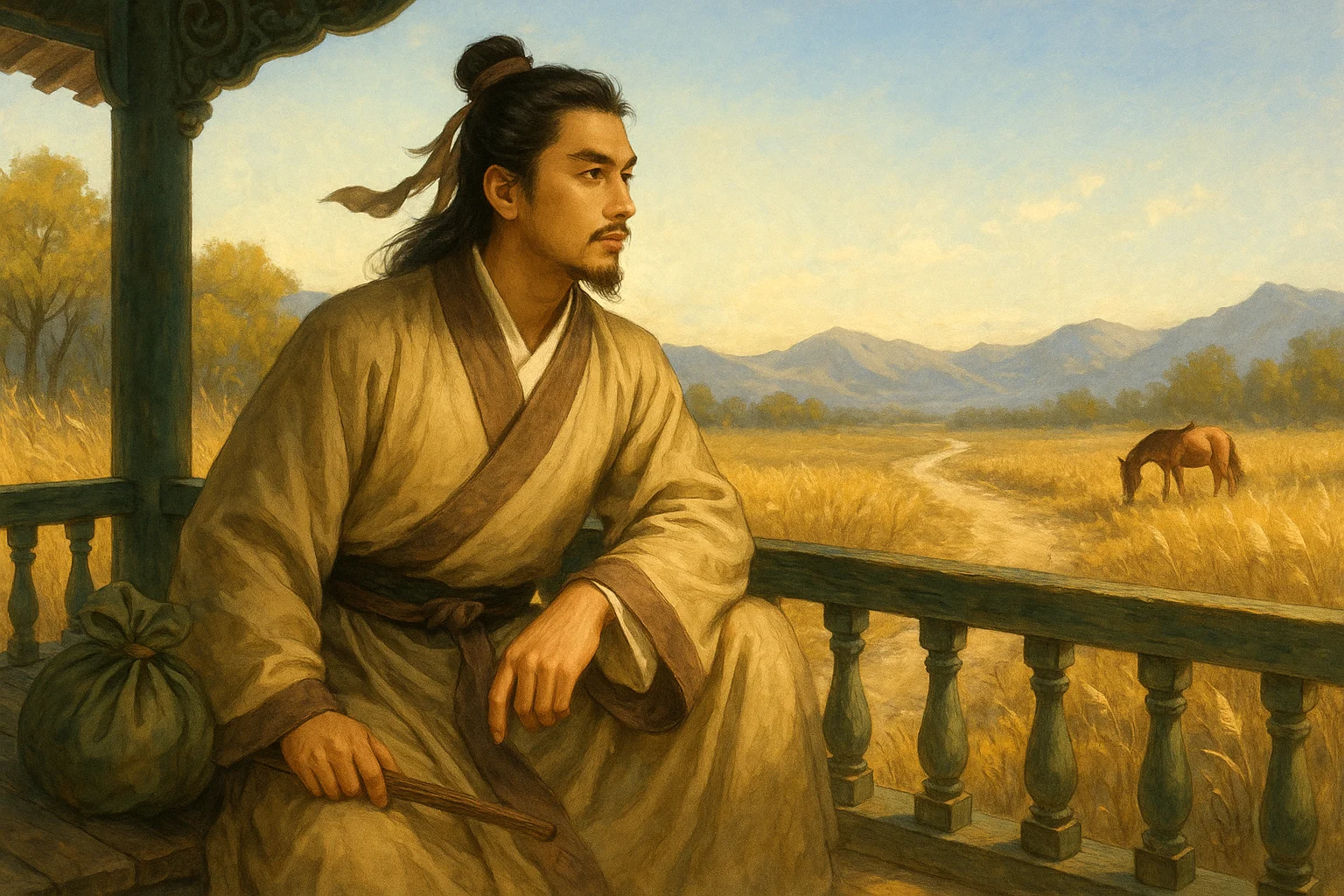From pleasure grounds I watch goose-feather snow,
Palaces like stars, trees brushstrokes glow.
The endless Wei River lies frozen still,
While dawn lifts Five Mounds with golden spill.
Original Poem
「雪二首 · 其一」
司空曙
乐游春苑望鹅毛,宫殿如星树似毫。
漫漫一川横渭水,太阳初出五陵高。
Interpretation
Composed during the zenith of Tang Xuanzong's reign (circa 750 CE), this poem captures Chang'an's imperial grandeur through a prism of winter splendor. Sikong Shu, then navigating the caprices of court life, transforms a snow-clad royal park into a meditation on dynastic brilliance and personal transience. The work's crystalline imagery—observed from the vantage of Lèyóu Plateau—reflects both the Tang aesthetic of "radiant clarity" (清朗) and the poet's own aspirational purity.
First Couplet: "乐游春苑望鹅毛,宫殿如星树似毫。"
Lèyóu chūn yuàn wàng émáo, gōngdiàn rú xīng shù shì háo.
From spring gardens at Lèyóu, we watch goose-feather snow— / Palaces scatter like stars, trees taper to brushstrokes.
The opening juxtaposes celestial and artistic metaphors: the "goose-feather" snow (鹅毛) embodies nature's lavish artistry, while the star-palaces and ink-wash trees (似毫) reframe the capital as a cosmic masterpiece. This dual perspective—simultaneously panoramic and miniaturist—mirrors Tang cosmology where human order mirrors heavenly patterns.
Second Couplet: "漫漫一川横渭水,太阳初出五陵高。"
Mànmàn yī chuān héng Wèi shuǐ, tàiyáng chū chū Wǔlíng gāo.
The Wei River bisects endless white— / First sun crowns the Five Mausoleums' heights.
Here, the gaze sweeps westward: the river's "bisecting" (横) line anchors the sprawling vista, while dawn's arrival at the imperial tombs (五陵) symbolizes continuity between past glory and present radiance. The "first sun" (初出) carries political undertones—a new day's promise for both empire and observer.
Holistic Appreciation
This poem captures the majestic beauty of Chang’an’s snowscape from a grand perspective. The Joyful Spring Garden, originally an imperial retreat, serves as the starting point, emphasizing both the nobility of the setting and the vastness of the view. The first couplet depicts snow blanketing palace gardens and trees, creating a magnificent scene, while the second shifts the gaze outward toward the distant Wei River and the Five Mausoleums, composing a sweeping snowy panorama. Beyond mere natural description, the poet infuses warmth and hope with "the sun’s first light," suggesting life’s inevitable turn toward brightness. With elegant language and grand imagery, the poem embodies the splendor of the High Tang era and the poet’s broad-minded spirit.
Artistic Merits
- Strong Spatial Depth, Expansive Imagery
The poem unfolds from foreground to background—palace gardens, trees, the Wei River, and the Five Mausoleums—creating a layered composition with striking visual depth. - Apposite Metaphors, Refined Diction
Phrases like "palaces like stars" and "trees as fine as brushstrokes" showcase classical ingenuity, enhancing both pictorial richness and artistic allure. - Emotion Through Scenery, Lofty Tone
Though depicting snow, the poem avoids bleakness, instead highlighting grandeur and vitality. The "sun’s first light" symbolizes hope and warmth, reflecting the poet’s optimistic outlook.
Insights
This poem teaches us to gaze at the dawn even amid life’s snowstorms, keeping inner light alive. Through the beauty of snow and imperial gardens, the poet conveys reverence for a peaceful golden age and hope for the future. Modern readers, too, may learn that even when life feels like an endless snowfall, the sun can still rise within the heart.
About the poet

Sikong Shu (司空曙), c. 720 – c. 790, courtesy name Wenming, was a native of Guangping (present-day Yongnian County, Hebei Province). A renowned mid-Tang dynasty poet, he was one of the "Ten Literary Masters of the Dali Era," alongside Lu Lun, Qian Qi, Han Hong, Li Duan, and others. Though his life lacked illustrious achievements, his poetry—marked by genuine emotion in simplicity and profound contemplation in solitude—secured him a unique place in mid-Tang literary circles.












